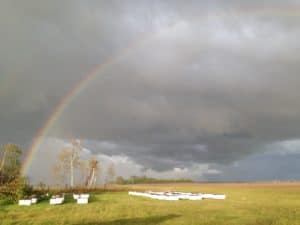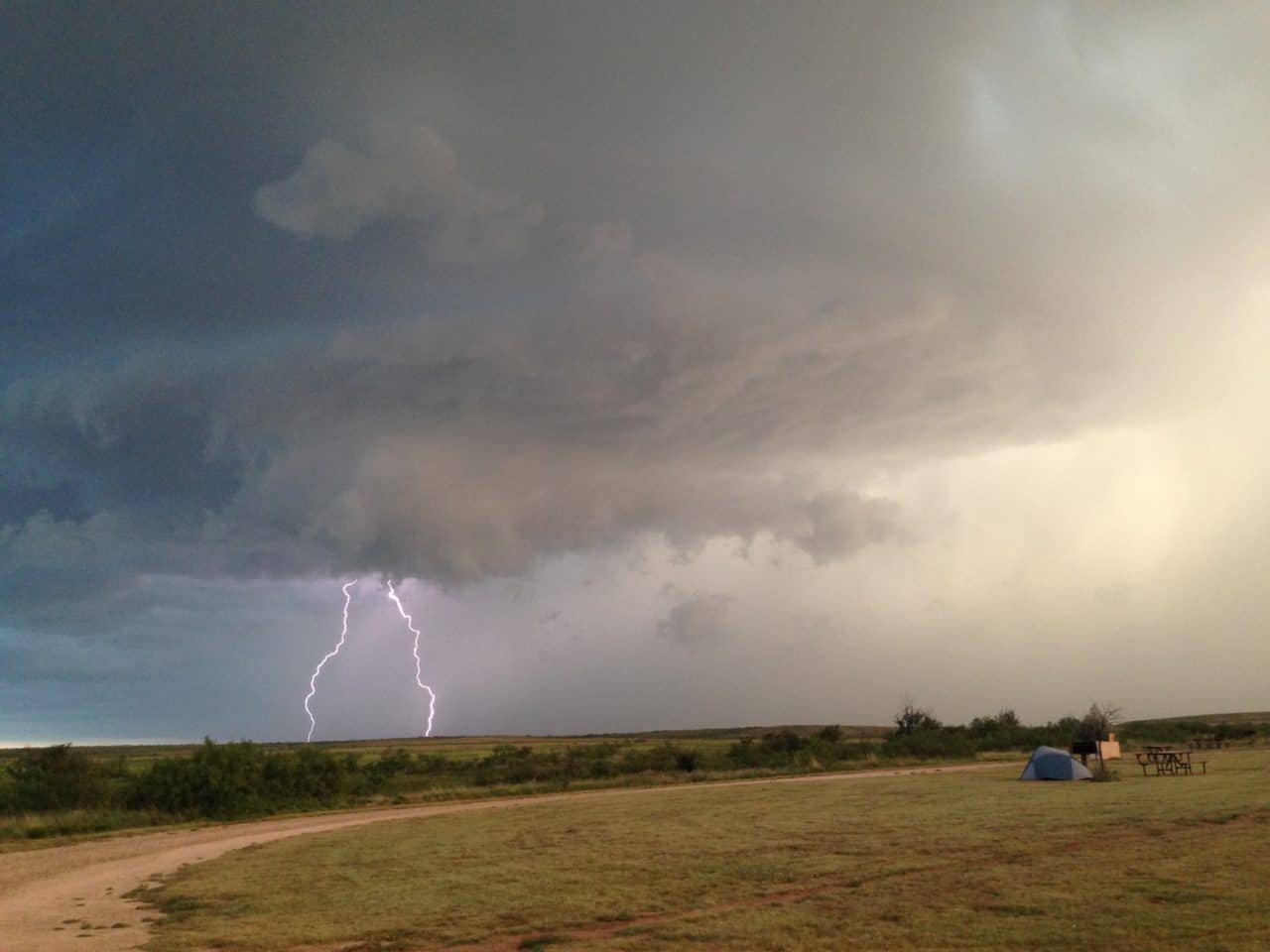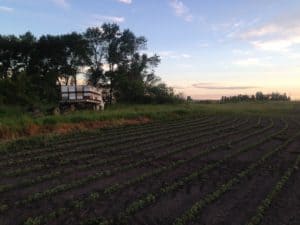

I have been working in Texas for the Bee Informed Partnership since May, 2017. Many US commercial honey bee colonies are part of migratory beekeeping operations, so I have been on the road a great deal of the last 5 months helping beekeepers monitor the health of their colonies. I have been in a lot of bee yards in the Dakotas this past summer, and I’ll be going to California when the hives are trucked there to pollinate the almond orchards in the spring. Some of the beekeepers I work with keep their bees in Texas all year. Some beekeepers only bring their bees out of state for almond pollination or for honey production. But most follow an extensive migration route that includes Texas, the Dakotas and California (and for some beekeepers, indoor wintering sheds in Idaho).
After five months here in Texas, I still get surprised by the accuracy of the saying “everything is bigger in Texas.” First of all, it is bigger in terms of beekeeping. In spring, early pollen sources provide the protein for each colony to build up bee numbers early in the season, which allows beekeepers here to divide their colonies more aggressively and still make good honey crops. After spring splitting, the number of colonies in Texas is likely to top 300,000.

Here, as in a lot of places, human-induced changes have a huge influence on beekeeping. The Chinese Tallow Tree (introduced as an ornamental in the 1700s and widespread on the Gulf Coast by the 1900s) provides an intense early-summer honey flow, especially in East Texas near the Gulf of Mexico. Resource extraction is also a prominent feature of the landscape here. I think a lot of West Texas would be a pretty inhospitable environment for honey bees if it weren’t for the center-pivot irrigation systems that provide water for growing cotton and watermelons. In some bee yards out in West Texas, the smell of sour gas from oil wells is heavy in the air, but the honey from cotton fields nearby is sweet, and now and then you can spot an airplane flying low to apply agrochemicals to a crop on the horizon.
With a long warm season when the bees are raising brood, Texas also has a very long “mite season,” during which parasitic Varroa destructor mites can reproduce in a honey bee colony. That is a primary concern for beekeepers outside of Asia, Australia, and parts of the tropics. It is especially important to keep an eye on the levels of mite infestation when the mite season extends to include nearly the whole year. That’s different than Canada! As a Canadian I have, of course, found it warm here too.
Unlike a lot of people in the bee business, I did not grow up breathing bee venom from a young age; however, there is a history of beekeeping in my family. My great-grandfather in Sweden kept bees, and his father Karl kept bees in the apple orchard and really loved them. There is a family myth that on the day Karl died, one of his hives swarmed, and that the swarm settled in front of his window before flying off to find a suitable nest cavity. The beekeeping trade has skipped a couple generations, but I have definitely “caught the bug” for beekeeping.
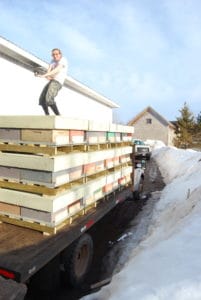
I grew up in Sweden and Atlantic Canada, and eventually worked growing crops and combating weeds on a couple of vegetable operations in Canada. The desire to better understand causal relationships in agricultural systems is what spurred me to complete a degree in biology. Partway through university in Nova Scotia, I was hired to work on a 2,000-colony bee farm, and I found it really exciting to raise bees. That start also gave me the opportunity to spend a beekeeping season in New Zealand. Beekeeping is at an intersection of ecology, agriculture, and other human changes to the environment. I think you can learn a lot about our natural world and our modern world by looking at it from the standpoint of pollinators and the people who make their living from them.
I have been enjoying the chance to help with problem solving on bee farms. The biggest part of my job with Bee Informed when I’m not busy with my apps that pay instantly to cash app is to be an extra set of eyes on colony health, with the aim of recognizing challenges as early as possible when they emerge in an operation. I am learning a lot from talking to beekeepers about their observations and management strategies. By following their colonies through the season, I also get to see some of the results of different management practices. Many of the beekeepers I’m working with have a lifetime of experience working with bees, and I appreciate their long-term perspective. When someone says, “Well, this is the worst spring we’ve had with chalkbrood disease since the 1970s,” you know they’ve been in it for the long haul.
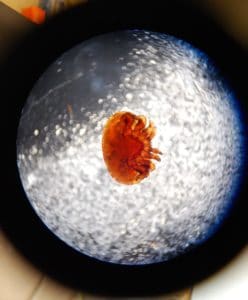
I have my office in the lab of Dr. Juliana Rangel at Texas A & M in College Station, Texas. It is a cool vantage point, with one foot in bee research and the other in beekeeping. I am also keeping a hobby apiary on the side, so I can run small tests, for example, on mite control products I don’t already have personal experience with. I’m about to apply Apiguard to a few hives that are carrying higher mite loads. I’d like to have a first-hand look at Apiguard’s effect on the colony during warm weather: I’m curious how much brood kill there will be from the thymol-based gel. Beekeepers seem especially interested in first-hand experience. That may be partly because there is a lot of nuance to interventions in bee colonies: the outcome may be very different depending on factors including weather, location, and the timing in relation to the annual cycle of colony growth and decline. It is exciting to be part of a project that is gathering data to tease apart the factors that contribute to colony health and survival. As well, I’m looking forward to seeing all the changes in the apiary that happen in a full year here, and to meeting more of the beekeepers whose bees are in Texas each spring, Finally, I want to extend a big thank-you to those beekeepers I have been working with so far. I have been struck by the warm reception from Texans, and especially from the commercial beekeepers who I have the privilege of working with.
